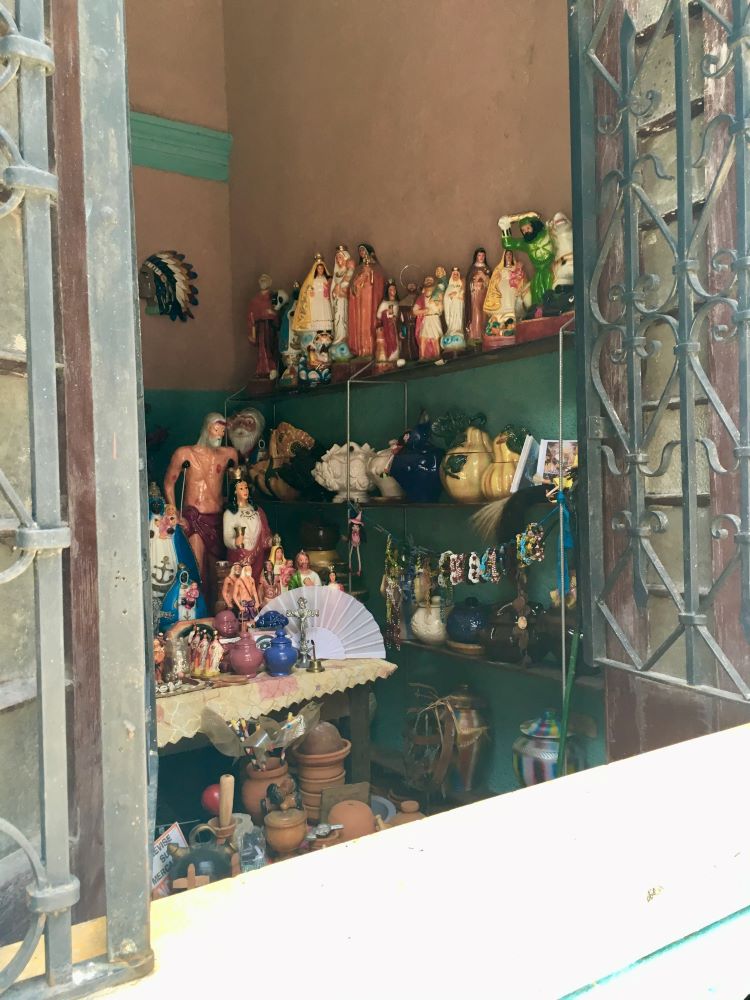In Matanzas, a longstanding cradle of Black pride and cultural tradition, this display of orishas who take the form of Catholic saints, historical figures, and even racialized icons form part of a privately owned ‘store’ selling goods out of a residence. Orishas are the deities and spiritual guides of a religion correctly called Regla de Ocha but popularly known as Santería. The objects for sale here include ceramic pots believers use as literal “homes” for an orisha (also called a santo or saint), which they place on the floor in the corner of a house. Slaves in mid-nineteenth-century Cuba first fashioned this religion, especially from Yoruba customs and practice, as a means of self-defense and collective survival. At the time, the Catholic Church barred them from full participation in the faith and knowledge of its sacraments; its priests and religious communities also owned slaves and profited from their suffering on plantations. While many people assume the contrary, Santería stood among the most persecuted of religions under Communist rule from 1968, when it was openly criminalized, until 1992, when leaders dropped state atheism in favor of general secularity. Although belief in Santería is “allowed”, the government maintains many officially authorized sites where most tourists (often unknowingly) encounter only politically trustworthy adherents to engage in its practices. This was less true a decade ago when Santería operated far more loosely, and believers adhered to local babalaos’ orally based traditions and teachings. Entrepreneurs, like the owner of this store, also operated without a government license. (July 2016)
